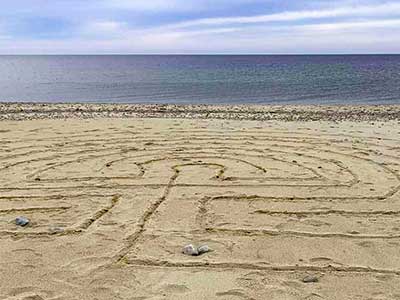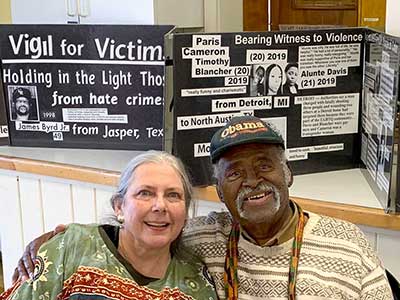CDC Website | Date Unknown
Racism is a system consisting of structures, policies, practices, and norms—that assigns value and determines opportunity based on the way people look or the color of their skin. This results in conditions that unfairly advantage some and disadvantage others throughout society. Racism — both interpersonal and structural – negatively affects the mental and physical health of millions of people preventing them from attaining their highest level of health, and consequently, affecting the health of our nation. A growing body of research shows that centuries of racism in this country has had a profound and negative impact on communities of color. The impact is pervasive and deeply embedded in our society—affecting where one lives, learns, works, worships and plays and creating inequities in access to a range of social and economic benefits—such as housing, education, wealth, and employment. These conditions—often referred to as social determinants of health—are key drivers of health inequities within communities of color, placing those within these populations at greater risk for poor health outcomes.
TAGS: [Strategies] [Health Disparities] [Economics] [Systemic Racism] [Housing] [Employment] [Social Justice] [Politics] [Black Lives Matter] [Indigenous] [Asian] [Latino/a]
by Connie Hassett-Walker | Updated June 2020
Outrage over racial profiling and the killing of African Americans by police officers and vigilantes in recent years helped give rise to the Black Lives Matter movement. But tensions between the police and black communities are nothing new. There are many precedents to the Ferguson, Missouri protests that ushered in the Black Lives Matter movement. Those protests erupted in 2014 after a police officer shot unarmed 18-year-old Michael Brown; the officer was subsequently not indicted.
TAGS: [Strategies] [2020’s] [Policing] [Slavery] [Black Lives Matter] [History] [Systemic Racism] [White Supremacy] [White Culture] [White Privilege] [-ing While Black] [Civil War] [Racial Covenants] [Politics] [Justice System] [Police Shootings] [Implicit Bias]
by Liz Mineo | September 2020
Yacovone, who co-authored “The African Americans: Many Rivers to Cross” with Henry Louis Gates Jr. in 2013, is now writing “Teaching White Supremacy: The Textbook Battle Over Race in American History.”
The Gazette interviewed Yacovone about the origins of his research, his findings, and why he thinks it’s necessary to teach the difficult story of slavery and white supremacy and their legacies.
TAGS: [Strategies] [2020’s] [History] [Slavery] [Denial] [White Supremacy] [Systemic Racism] [Social Justice] [Black Lives Matter] [Civil War] [CRT]
by Anagha Srikanth | July 2021
Thousands of papers, some documenting the auction and sale of enslaved Black Americans, were headed for the auction block themselves before Black historians and community members stepped in to reclaim ownership over their past. “It was important to the community because this will connect the dots for people and the younger generation, to let them know how things were. To move forward, you have to see what the past was like,” said Carolyn Brooks, a community historian with the Chesapeake Heartland Project. About 2,000 pages dating from the late 1600s to early 1800s were found in a plastic trash bag in the attic of a 200-year-old house near Chestertown, Maryland, as the owner, Nancy Bordely Lane, was cleaning it out this spring. The foundation of the house, built in 1803 on property that had remained in the family since 1667, was reportedly damaged and the structure was going to be demolished. The documents were headed for the garbage, but were rescued and delivered to Dixon’s Crumpton Auction in waxed seafood boxes, John Chaski, an antique-manuscript expert, told the Washington Post.
TAGS: [Strategies] [2020’s] [Slavery] [History] [Systemic Racism] [Art & Culture] [Racial Terrorism] [White Supremacy] [White Culture]
by Andrew Kennard | June 2021
WASHINGTON — A $59 million settlement in Peltier v. Haaland, a class action lawsuit alleging trust fund mismanagement and failure to account by the Department of the Interior, will go to four tribes located in the Midwest and Northwest United States and more than 39,000 beneficiaries. On June 10, the United States District Court for the District of Columbia finalized the settlement, which was reached in the Court of Federal Claims with the Chippewa Cree Tribe of the Rocky Boy’s Reservation of Montana, the Turtle Mountain Band of Chippewa Indians of North Dakota, the Little Shell Tribe of Chippewa Indians of Montana, and the White Earth Band of Chippewa Indians of Minnesota, the Interior Department announced. The tribes were represented by the Native American Rights Fund (NARF), according to the website designated for the lawsuit.
TAGS: [Strategies] [2020’s] [Reparations] [Indigenous] [Systemic Racism] [Justice System] [History] [Economics] [Politics]
by Teju Ravilochan | June 2021
Deeply curious about the reason for the stark difference between Blackfoot culture and his own culture, Maslow sought out positive deviants, or unusually successful individuals. He started with the wealthiest members of the Blackfoot tribe. He discovered that “for the Blackfoot, wealth was not measured by money and property but by generosity. The wealthiest man in their eyes is one who has almost nothing because he has given it all away” (Coon, 2006). Maslow witnessed a Blackfoot “Giveaway” ceremony in his first week at Siksika. During the Giveaway, members of the tribe arranged their tipis in a circle and publicly piled up all they had collected over the last year. Those with the most possessions told stories of how they amassed them and then gave every last one away to those in greater need (Blood & Heavy Head, 2007, (video 7 out of 15, minutes 13:00–14:00). By contrast, as shared by Maslow’s biographer Edward Hoffman, Maslow observed different qualities in members of his own culture.
TAGS: [Strategies] [2020’s] [Indigenous] [Social Justice] [Advocacy] [Role Model] [Tips-Dos/Don’ts] [Assumptions] [Economics]

















